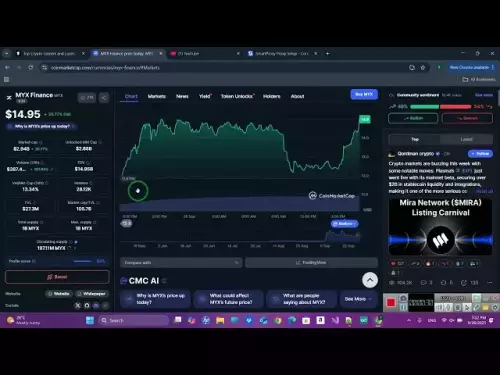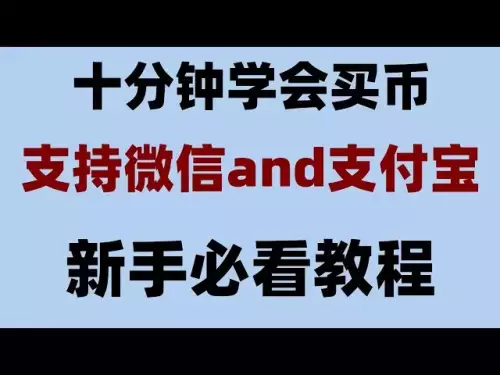-
 bitcoin
bitcoin $109547.008142 USD
0.04% -
 ethereum
ethereum $4011.838726 USD
-0.05% -
 tether
tether $1.000402 USD
-0.01% -
 xrp
xrp $2.798606 USD
0.88% -
 bnb
bnb $970.877944 USD
1.39% -
 solana
solana $202.237275 USD
-0.95% -
 usd-coin
usd-coin $0.999673 USD
0.00% -
 dogecoin
dogecoin $0.229294 USD
-1.15% -
 tron
tron $0.336370 USD
-0.45% -
 cardano
cardano $0.777260 USD
-1.66% -
 hyperliquid
hyperliquid $45.503019 USD
1.73% -
 ethena-usde
ethena-usde $1.000362 USD
0.01% -
 chainlink
chainlink $20.785303 USD
-1.10% -
 avalanche
avalanche $28.755822 USD
-0.11% -
 stellar
stellar $0.358303 USD
-0.48%
Earning signal for forced liquidation of contracts: how to avoid the risk of forced liquidation
Earning signals for forced liquidation in crypto trading are complex; understanding margin levels, liquidation prices, and market volatility is crucial to avoid risks.
Jun 07, 2025 at 09:56 am

Earning signals for forced liquidation of contracts can be a complex and risky aspect of cryptocurrency trading. Understanding these signals and learning how to avoid the risk of forced liquidation is crucial for any trader looking to protect their investments. This article will delve into the intricacies of forced liquidation, explain the earning signals, and provide detailed strategies to minimize the risks involved.
Understanding Forced Liquidation
Forced liquidation occurs when a trader's position is automatically closed by the exchange due to insufficient margin to maintain the position. This usually happens when the market moves against the trader's position, causing their margin to fall below the maintenance level set by the exchange.
When a trader opens a futures or margin trading position, they are required to deposit a certain amount of collateral, known as the initial margin. As the market fluctuates, the value of the position changes, and the trader must maintain a minimum margin level, known as the maintenance margin. If the value of the position drops and the margin falls below this level, the exchange will initiate forced liquidation to recover the borrowed funds.
Earning Signals for Forced Liquidation
Earning signals for forced liquidation are indicators that a trader's position is at risk of being liquidated. These signals can be derived from various sources, including market data, position status, and account balance.
Margin Level: The most direct signal of potential forced liquidation is the margin level. If the margin level falls below the maintenance margin, it is a clear indication that liquidation is imminent.
Liquidation Price: Another crucial signal is the liquidation price, which is the price at which the position will be forcibly closed. Monitoring this price in relation to the current market price can help traders anticipate when their position might be liquidated.
Account Balance: Keeping an eye on the overall account balance is essential. A significant drop in the account balance can signal that the margin is being depleted, increasing the risk of forced liquidation.
Market Volatility: High market volatility can lead to rapid price changes, increasing the likelihood of forced liquidation. Traders should be particularly cautious during times of high volatility.
Strategies to Avoid Forced Liquidation
To minimize the risk of forced liquidation, traders can employ several strategies. These strategies involve careful management of positions, understanding market trends, and maintaining adequate margin levels.
Use Stop-Loss Orders: One of the most effective ways to avoid forced liquidation is to use stop-loss orders. A stop-loss order automatically closes a position when the price reaches a certain level, preventing further losses and potential liquidation.
- Setting Up a Stop-Loss Order: To set up a stop-loss order, follow these steps:
- Log into your trading platform.
- Navigate to the open positions section.
- Select the position for which you want to set a stop-loss.
- Enter the stop-loss price, ensuring it is above the liquidation price.
- Confirm the order.
- Setting Up a Stop-Loss Order: To set up a stop-loss order, follow these steps:
Monitor Positions Regularly: Regular monitoring of open positions is crucial. By keeping a close watch on the market and your positions, you can take timely action to add more margin or close positions if necessary.
- Setting Up Alerts: Many trading platforms allow users to set up alerts for specific price levels or margin thresholds. To set up an alert:
- Access the alert settings in your trading platform.
- Set the alert to trigger when the price approaches the liquidation price or when the margin level reaches a critical point.
- Ensure notifications are enabled on your device.
- Setting Up Alerts: Many trading platforms allow users to set up alerts for specific price levels or margin thresholds. To set up an alert:
Adjust Leverage: High leverage can amplify both gains and losses. By adjusting leverage to a lower level, traders can reduce the risk of forced liquidation.
- Changing Leverage Settings: To change the leverage on an existing position:
- Go to the position management section of your trading platform.
- Select the position you want to adjust.
- Choose a lower leverage setting.
- Confirm the change.
- Changing Leverage Settings: To change the leverage on an existing position:
Maintain Adequate Margin: Always ensure that your account has sufficient margin to cover potential losses. Adding more funds to your account can provide a buffer against market fluctuations.
- Depositing More Margin: To add more margin to your account:
- Navigate to the deposit section of your trading platform.
- Select the cryptocurrency or fiat currency you want to deposit.
- Follow the platform's instructions to transfer the funds.
- Confirm the deposit and wait for the funds to be credited to your account.
- Depositing More Margin: To add more margin to your account:
Diversify Positions: Spreading your investments across different assets can reduce the risk of forced liquidation. If one position moves against you, other positions might offset the losses.
- Diversifying Your Portfolio: To diversify your positions:
- Analyze different cryptocurrencies and market trends.
- Allocate your funds across various assets based on your risk tolerance and market analysis.
- Regularly rebalance your portfolio to maintain diversification.
- Diversifying Your Portfolio: To diversify your positions:
Understanding Market Trends
Understanding market trends is crucial for avoiding forced liquidation. By staying informed about market movements, traders can make more informed decisions and adjust their strategies accordingly.
Technical Analysis: Using technical analysis tools such as moving averages, RSI, and Bollinger Bands can help traders identify potential market trends and make better trading decisions.
Fundamental Analysis: Keeping up with news and events that affect cryptocurrency prices can provide insights into market direction. Factors such as regulatory changes, technological developments, and macroeconomic indicators can significantly impact market trends.
Sentiment Analysis: Monitoring social media and other platforms for market sentiment can also provide valuable information. Positive or negative sentiment can influence market movements and help traders anticipate potential price changes.
Case Studies and Examples
To illustrate the concepts discussed, let's look at a few case studies and examples of forced liquidation and how traders can avoid it.
Case Study 1: A trader opens a long position on Bitcoin with 10x leverage. The market suddenly drops, and the trader's margin level falls below the maintenance margin. The exchange initiates forced liquidation, closing the position at a loss. To avoid this, the trader could have set a stop-loss order or monitored the position more closely to add more margin or close the position manually.
Case Study 2: Another trader has diversified their portfolio across multiple cryptocurrencies. When one position moves against them, the gains from other positions help offset the losses, preventing forced liquidation. This demonstrates the importance of diversification in managing risk.
Example: A trader sets up an alert for when the price of Ethereum approaches their liquidation price. When the alert triggers, the trader adds more margin to their account, preventing forced liquidation. This example shows how proactive monitoring and timely action can mitigate the risk of liquidation.
Frequently Asked Questions
Q: How can I calculate my liquidation price?A: The liquidation price can be calculated using the formula: Liquidation Price = (Entry Price x (1 ± (Maintenance Margin / Leverage))) / (1 - (Maintenance Margin / Leverage)). The plus or minus sign depends on whether you are in a long or short position. Most trading platforms provide this information automatically, but understanding the calculation can help you manage your positions more effectively.
Q: What is the difference between initial margin and maintenance margin?A: The initial margin is the amount of collateral required to open a position, while the maintenance margin is the minimum amount of margin that must be maintained to keep the position open. If the margin level falls below the maintenance margin, the position is at risk of forced liquidation.
Q: Can I avoid forced liquidation by adding more margin after the fact?A: Yes, you can avoid forced liquidation by adding more margin to your account before the position is liquidated. However, this must be done quickly, as the exchange will initiate liquidation if the margin level remains below the maintenance margin.
Q: Are there any fees associated with forced liquidation?A: Yes, most exchanges charge a liquidation fee to cover the costs of closing the position. This fee is usually a percentage of the position's value and is deducted from the remaining margin after liquidation.
Disclaimer:info@kdj.com
The information provided is not trading advice. kdj.com does not assume any responsibility for any investments made based on the information provided in this article. Cryptocurrencies are highly volatile and it is highly recommended that you invest with caution after thorough research!
If you believe that the content used on this website infringes your copyright, please contact us immediately (info@kdj.com) and we will delete it promptly.
- BTC Price Wobbles as Bitcoin ETFs See Inflows, Ethereum ETFs Bleed: What's the Deal?
- 2025-09-28 22:25:17
- Bitcoin Price Eyes Reversal? Analyst Weighs In
- 2025-09-28 22:25:17
- Shiba Inu Price Predictions: Navigating the Meme Coin Maze
- 2025-09-28 22:30:02
- GOAT Network's $GOATED: Navigating the Post-Listing Plunge
- 2025-09-28 22:30:02
- Riding the Altcoin Wave: Can Mutuum Finance Turn Pennies into Dollars Before Bitcoin's Peak?
- 2025-09-28 22:30:02
- Tapzi: Skill-to-Earn Revolution in Web3 Gaming
- 2025-09-28 22:30:13
Related knowledge

Practical parameter settings for a Bitcoin multi-timeframe moving average system
Sep 18,2025 at 10:54pm
Optimizing Timeframe Combinations for Bitcoin Trading1. Selecting appropriate timeframes is crucial when building a multi-timeframe moving average sys...

How can I filter out false breakouts in Dogecoin high-frequency trading?
Sep 22,2025 at 01:00am
Understanding False Breakouts in Dogecoin Trading1. A false breakout occurs when Dogecoin's price appears to move beyond a defined support or resistan...

Techniques for identifying tops and bottoms in the Bitcoin on-chain NVT model
Sep 20,2025 at 07:54pm
Understanding the NVT Model in Bitcoin Analysis1. The Network Value to Transactions (NVT) ratio is often described as the 'P/E ratio' of the cryptocur...

What does the surge in open interest in Bitcoincoin futures mean?
Sep 20,2025 at 11:18pm
Understanding the Surge in Dogecoin Futures Open Interest1. A surge in open interest within Dogecoin futures indicates a growing number of active cont...

How can I use the Ethereum USDT premium to gauge market sentiment?
Sep 18,2025 at 11:55pm
Understanding the Ethereum USDT Premium1. The Ethereum USDT premium refers to the price difference between USDT (Tether) traded on Ethereum-based plat...

What should I do if Ethereum staking yields decline?
Sep 20,2025 at 06:18am
Understanding the Causes Behind Declining Ethereum Staking Yields1. The Ethereum network transitioned to a proof-of-stake consensus mechanism with the...

Practical parameter settings for a Bitcoin multi-timeframe moving average system
Sep 18,2025 at 10:54pm
Optimizing Timeframe Combinations for Bitcoin Trading1. Selecting appropriate timeframes is crucial when building a multi-timeframe moving average sys...

How can I filter out false breakouts in Dogecoin high-frequency trading?
Sep 22,2025 at 01:00am
Understanding False Breakouts in Dogecoin Trading1. A false breakout occurs when Dogecoin's price appears to move beyond a defined support or resistan...

Techniques for identifying tops and bottoms in the Bitcoin on-chain NVT model
Sep 20,2025 at 07:54pm
Understanding the NVT Model in Bitcoin Analysis1. The Network Value to Transactions (NVT) ratio is often described as the 'P/E ratio' of the cryptocur...

What does the surge in open interest in Bitcoincoin futures mean?
Sep 20,2025 at 11:18pm
Understanding the Surge in Dogecoin Futures Open Interest1. A surge in open interest within Dogecoin futures indicates a growing number of active cont...

How can I use the Ethereum USDT premium to gauge market sentiment?
Sep 18,2025 at 11:55pm
Understanding the Ethereum USDT Premium1. The Ethereum USDT premium refers to the price difference between USDT (Tether) traded on Ethereum-based plat...

What should I do if Ethereum staking yields decline?
Sep 20,2025 at 06:18am
Understanding the Causes Behind Declining Ethereum Staking Yields1. The Ethereum network transitioned to a proof-of-stake consensus mechanism with the...
See all articles









































































